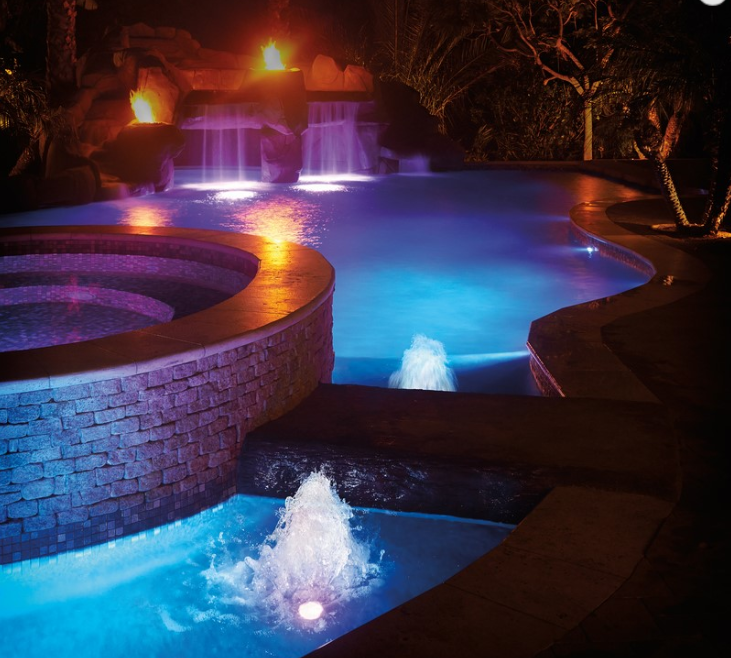
2022-05-30T11:17:12
Today's swimming pools, spas and waterfeatures have moved several steps beyond their traditional, classic forms in shape, complexity, visual interest and beauty-and so have the techniques and technologies involved in giving them a warm, inviting glow when evening comes. Happily, we're far past the bad old days when the common solution to most watershape lighting tasks was placement of a blinding, 500-watt incandescent bulb in a huge, visually intrusive niche: Through years of innovation, experimentation and refinement with light-emitting diodes (LEDs), lighting is now adding splendor and wonder to the pool/spa experience in compact, unobtrusive packages - a design asset that couldn't even have been imagined 20 years ago. But still, finding just the right way to achieve desired and desirable lighting effects can be a challenge, particularly when the water is moving. There was a time when swimming pools were simple and mostly similar. They came as rectangles or in kidney shapes; they had either steps or ladders and, in many installations, some sort of bench in the deep end. If they had lighting, they were equipped with single 500-watt incandescent bulbs set in big niches on one end or the other. Those days, happily, are long gone. Modern swimming pools come in all sorts of shapes and sizes and have so much more going on structurally and aesthetically that those familiar older pools look plain and primitive by comparison. Pools now come with vanishing edges, grottos, waterfalls, spillways, tanning shelves, bubblers, deck jets and spas- and their often-raised walls include scuppers, spouts and water bowls. These new features and configurations make lighting a swimming pool a much more complicated task than was the case a generation ago. This calls on pool designers and engineers to broaden their thinking. What's more, there are whole new technologies out there, and they seem to be improving, developing and changing at something approaching the speed of light, so now there's an added burden of keeping up with the times. The great thing is, modern lighting systems are up to the challenge, with degrees of flexibility and subtlety that couldn't be achieved even a few years ago. For purposes of this discussion, we'll stick exclusively to LED options, mainly because their use requires unusual thought and care in the design process. The best feature of LED lights is that they are, compared to older incandescent and fiberoptic options, so wonderfully compact. Where one big incandescent bulb bombarded a pool with a single source of light and long strips of fiberoptic cable brought a warm glow to a pool's perimeter, it's possible to use multiple, targeted LED fixtures to accentuate intricate pool features and enhance the visual experience. The direction in which these LEDs point is one big kay to the nighttime experience of the pool. As was also the case with incandescent lights, it's always desirable to position the fixtures so that their beams point away from the house and its primary viewpoints. But unlike older lights, LED fixtures are generally placed higher in the walls, to the challenge of orientation can become a bit more urgent. In fact, this factor is important enough that, as was suggested above, making decisions about lighting early in the process can have a profound influence on how the pool is laid out and its features are positioned. You never want the homeowners and their guests to be blinded by beams of light-but you still have the responsibility to make certain they have safe passage while in the water and can get in and out of it without incident.

Have a question? Ask here!
Required fields are marked *